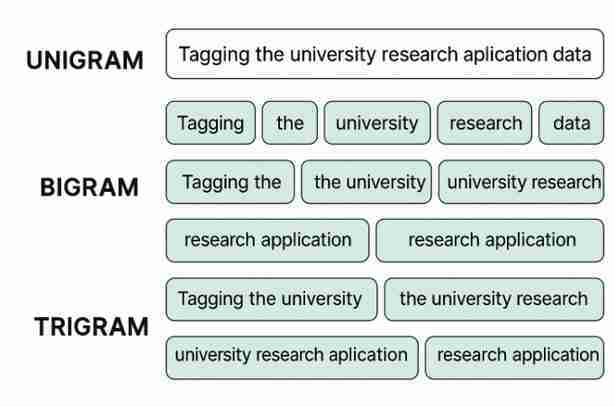Best Practices for N-gram Tagging during Research
 Raman Kapoor
Raman Kapoor#When you are dealing with tons of research applications, it can be quite tricky to pull out the important stuff and rank them at the same time with important information. That’s where N-grams come in and help us break down the text into manageable, meaningful chunks.
#What are N-grams?
Unigrams = Single word great for spotting common keywords like ‘research’ or ‘funding.’
Bigrams = Two-word combinations such as ‘university research,’ ‘grant proposal,’ or ‘funding research,’ which give more context than just a single word.
Trigrams = Three-word phrases that capture even more context and meaning, like ‘machine learning model’ or ‘university research funding’.

#Best Practices
#1. Clean up
Before we do anything, we need to tidy the text and get rid of punctuation.
Make everything lowercase, and remove filler words like ‘the’ or ‘and’ before embedding or combining any texts
#2. Pick right size
Unigrams works pretty well for quick overviews.
Bigrams and trigrams help you to understand context and catch key phrases that matter most in your domain.
#3. Don’t get fancy too fast
The longer the phrases, the messier things will get, which may be complex to process and generate. Use filters to keep only the useful stuff, like phrases that show up often or carry weight in your field.
#4. Speak the language of your data
If you’re working with academic applications, tweak your approach to recognize terms that matter in that world, like ‘funding request’, ‘publication history’, or ‘principal investigator’.
#5. More Data = Better Results
N-grams work best when you have lots of text to learn from. If you only have a few documents, stick with simpler methods.
#6. Use N-grams with other smart tools and algorithms
Combine n-grams with things like entity recognition or topic detection to really dig deep and tag content meaningfully with any research algorithms as per your needs and requirements.
Subscribe to my newsletter
Read articles from Raman Kapoor directly inside your inbox. Subscribe to the newsletter, and don't miss out.
Written by
